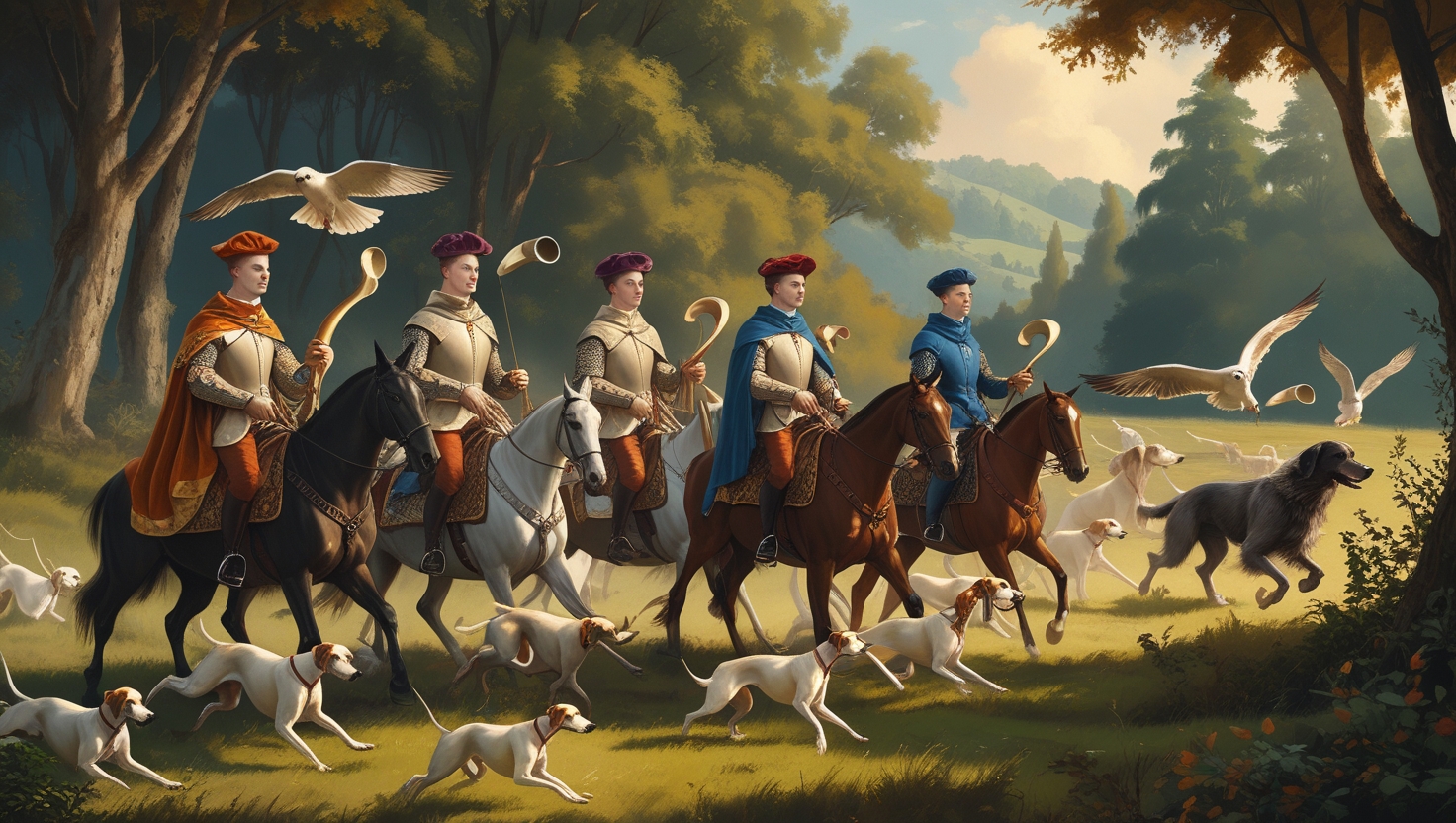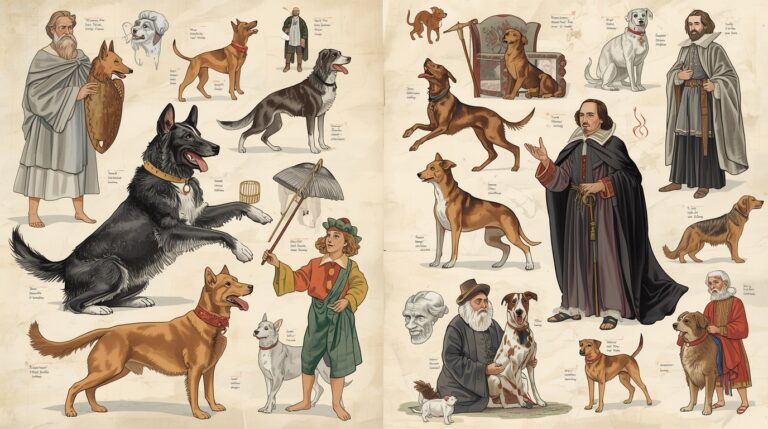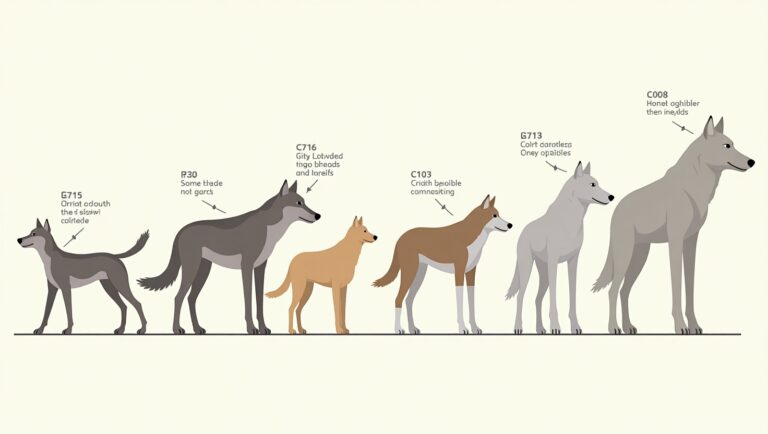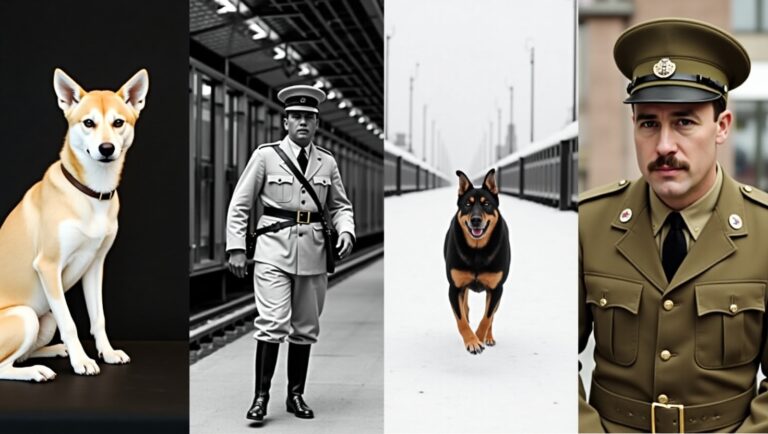Hunting Dogs and Falconry in Medieval Europe

Introduction: Hunting and Falconry in the Medieval Imagination
In Medieval Europe, hunting and falconry were not mere pastimes—they were expressions of power, status, and refined nobility. Within the courts of kings, lords, and barons, animals like hunting dogs and trained falcons were tools of prestige and essential to aristocratic identity.
This article explores the profound symbolism, techniques, and social function of canine and avian hunting practices that flourished throughout the Middle Ages, shaping medieval identity, politics, and art.
The Feudal Landscape of Hunting
The feudal economy was deeply intertwined with animal-based sport. Control over land, forests, and game animals determined a nobleman’s influence. Access to forests was tightly controlled under game laws, which reserved wild boar, deer, and hares for the elite.
The Royal Forest System in England under the Normans turned large tracts of land into exclusive hunting preserves for the monarch and his inner circle.
Social Hierarchy and Hunting Rights
Only the aristocracy had the legal right to hunt large game. Peasants caught poaching faced harsh penalties, including mutilation or death. This created a direct correlation between animal sport and social hierarchy.
Falcons and hounds were status markers, often given as gifts in diplomatic exchanges. To own a gyrfalcon or a white greyhound was to declare one’s wealth and rank.
The Symbolism of Hunting Dogs
In medieval symbolism, dogs represented loyalty, bravery, and unwavering service. These traits were not only admired but projected onto noble ideals.
Noble families frequently incorporated dogs into heraldry, using breeds like talbots and greyhounds in their coat of arms to reflect their virtuous qualities.
Popular Hunting Dog Breeds of Medieval Europe
Several dog breeds emerged or rose to prominence during the Middle Ages:
- Greyhound: Valued for speed and elegance, used in coursing hares.
- Bloodhound: Renowned for scent tracking and tracking wounded game.
- Alaunt: A large, muscular guard and boar hunting dog, associated with Norman lords.
- Talbot: A now-extinct scent hound, ancestor to modern Beagles and Foxhounds.
Each breed was developed for specific hunting purposes, reflecting the scientific and selective breeding methods of the time.
Training and Handling Hunting Dogs
Dog training in the Middle Ages involved:
- Pack conditioning
- Leash and lure methods
- Whistle and hand-signal obedience
Training began early, with dogs introduced to scent trails, basic commands, and pack hierarchy. Obedience and aggression were carefully balanced, especially in boar-hunting packs.
Types of Hunting Involving Dogs
Different dog breeds served distinct purposes depending on the game:
- Boar hunting: Required strong, aggressive dogs like Alaunts or Mastiff-types.
- Stag hunting: Involved Bloodhounds to track and sighthounds to chase.
- Hare coursing: Popular sport for noblewomen, utilizing Greyhounds.
Each hunting expedition was both ritual and sport, filled with pageantry, strategy, and physical endurance.
Dogs in Medieval Literature and Art
Hunting dogs frequently appear in:
- Illuminated manuscripts like the Book of Hours
- Tapestries and chivalric illustrations
- Epic poems, such as those by Chaucer
These depictions celebrate not only the utility of dogs but also their emotional connection with their noble handlers.
Also read this Medieval and Renaissance Dog History
Women and Hunting Dogs
Noblewomen often engaged in hare coursing and small-game hunts. Portraits from the period show ladies accompanied by Greyhounds, symbolizing refinement, chastity, and noble virtue.
Women also received dogs as courtship gifts, reinforcing the symbolic link between fidelity and affection.
Falconry: A Noble Art
Falconry was considered the pinnacle of aristocratic sport. It demanded patience, training expertise, and access to expensive birds and equipment.
Falcons were more than hunters; they were symbols of nobility, given their regal bearing and soaring mastery.
Types of Falcons and Their Uses
- Gyrfalcon: Reserved for royalty; used in high-level game hunting.
- Peregrine falcon: Popular among lords; versatile and powerful.
- Merlin: Smaller falcon used by ladies and squires.
- Sparrowhawk: Trained for small bird game.
Each bird had a distinct status and function, often reflected in sumptuary laws.
The Falconer’s Tools and Techniques
Key tools included:
- Hood: Covered the bird’s eyes to keep it calm.
- Jesses: Leather straps attached to the bird’s legs.
- Creance: A long line used during training.
- Lure: Feathered object used to call the bird back.
Falconers were highly respected and often employed full-time by noble households.
Court Rituals and Falconry Displays
Hawking events were central to court festivals, where nobles demonstrated their training skill and falcon pedigree.
Such displays served as social theater, reinforcing the noble class’s mastery over nature and their refined elegance.
Women in Falconry
Medieval texts and art depict noblewomen holding falcons as a symbol of status and sensuality. Birds like the Merlin were often considered suitable for their smaller size and graceful flight.
These women were often adept trainers, managing aviaries and participating in hunting rituals.
Falcons in Medieval Symbolism and Heraldry
The falcon symbolized:
- Clarity of vision
- Precision in action
- High-born power
It appeared on family crests, seals, and court garments, reinforcing the image of the noble hunter as an ideal ruler.
Falconry in Medieval Literature
Falcon metaphors dominate courtly poetry and romance tales:
- In Chaucer’s Canterbury Tales, falcons express emotional restraint and noble suffering.
- Birds are also metaphors for courtship, loyalty, and chivalric devotion.
Hunting and Religion
The Church occasionally criticized hunting for its cruelty, though many clergy participated in falconry. Monastic orders, especially the Cistercians, opposed hunting as a vanity, while Benedictine abbots maintained trained falcons.
This duality highlights the tension between spiritual restraint and worldly enjoyment.
Medieval Law and Animal Sports
Hunting was heavily regulated. Forest laws prohibited commoners from:
- Killing game
- Owning hunting dogs
- Carrying bows or falcons
Violations could result in fines, imprisonment, or mutilation. These laws emphasized class division and resource control.
Hunting as Diplomacy and Alliance
Gifts of falcons and hounds were diplomatic tokens between:
- Kings and foreign rulers
- Lords seeking favor
- Squires earning recognition
Such exchanges reinforced alliances, loyalty, and noble fraternity.
The Decline and Transformation of Medieval Hunting
By the 15th century, firearms, social shifts, and urbanization changed the nature of hunting. Falconry declined, but dog breeding and hunting traditions remained, influencing modern sport hunting and kennel clubs.
Conclusion: Legacy of Hunting Dogs and Falcons
Hunting dogs and falcons in Medieval Europe were more than tools—they were emblems of class, discipline, and symbolic mastery. They represented the balance between nature and civilization, reinforcing the elite’s place at the apex of feudal order.Their legacy endures in our heraldic traditions, breeding lines, and even in modern sporting culture, reminding us of a time when canine loyalty and avian precision defined nobility itself.





